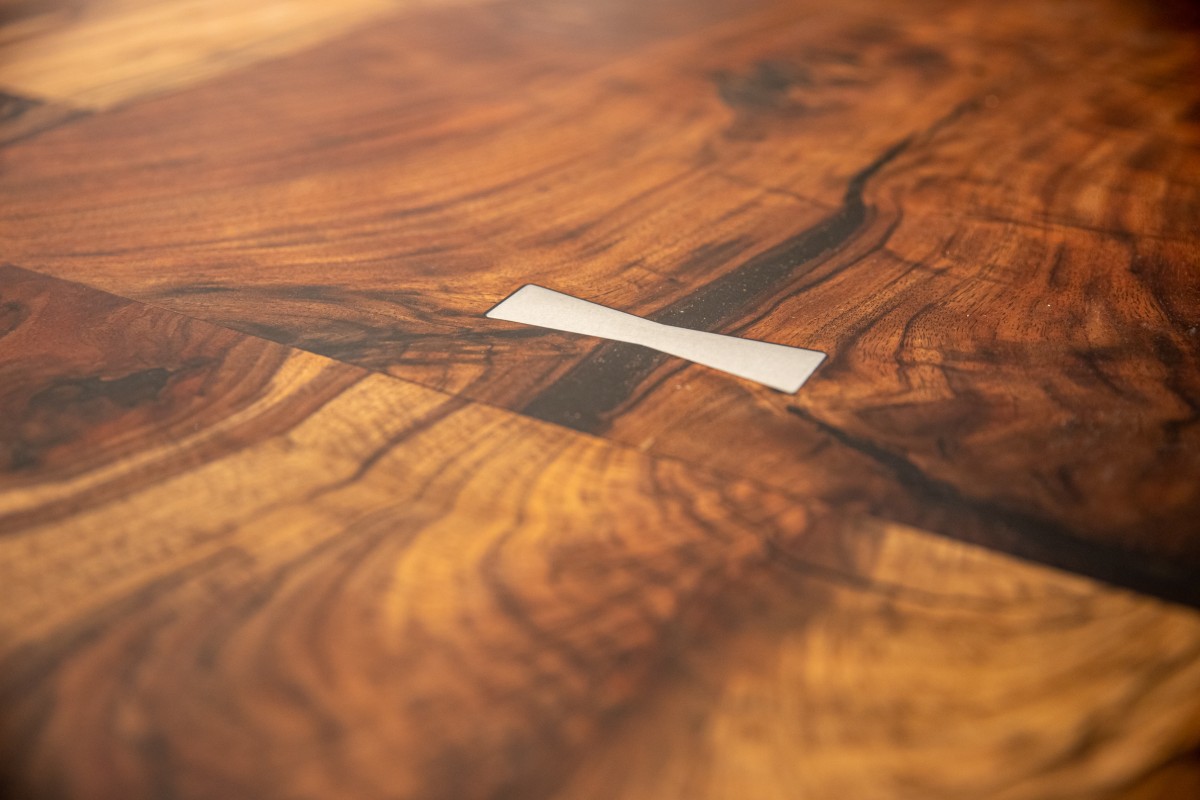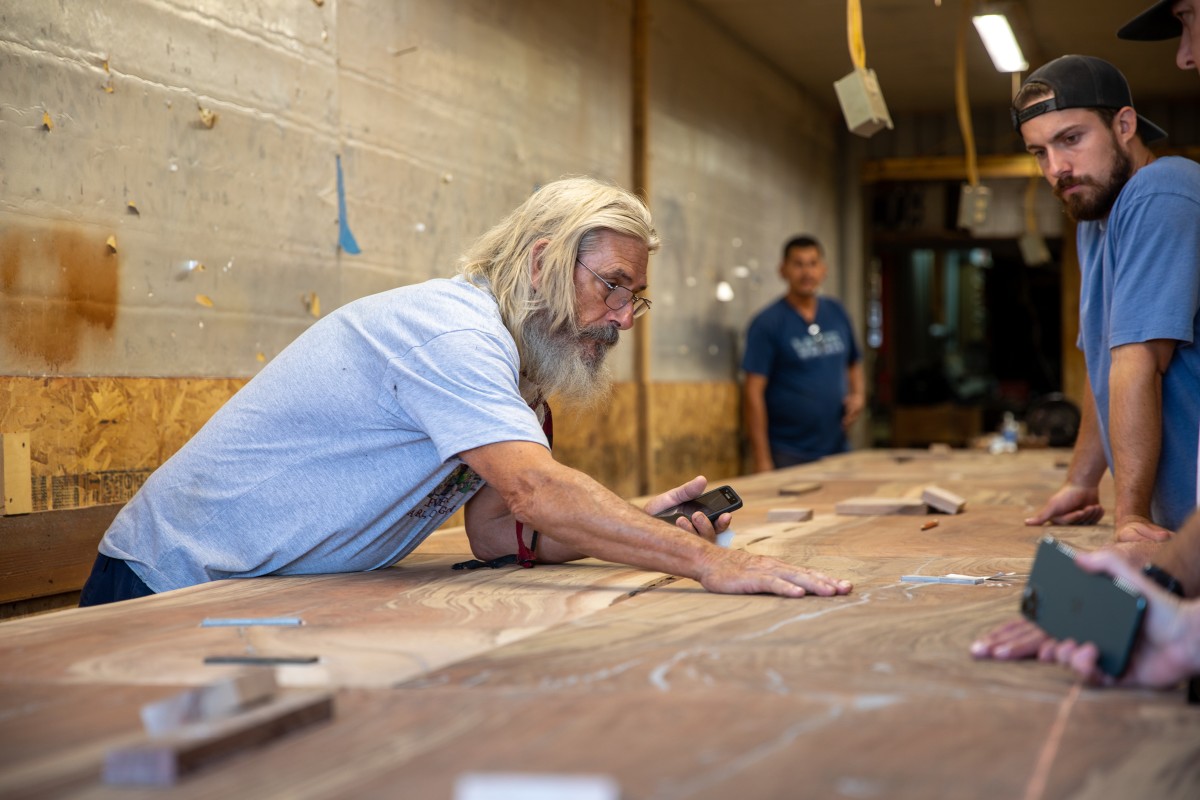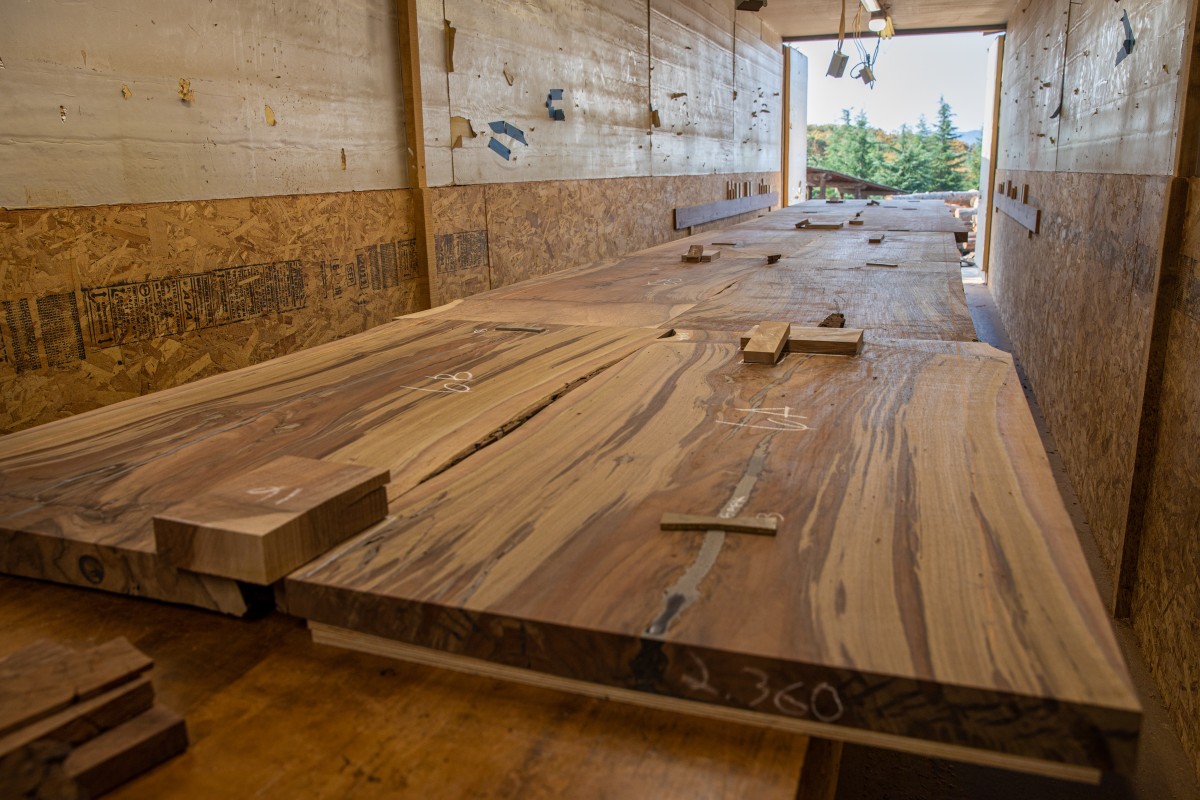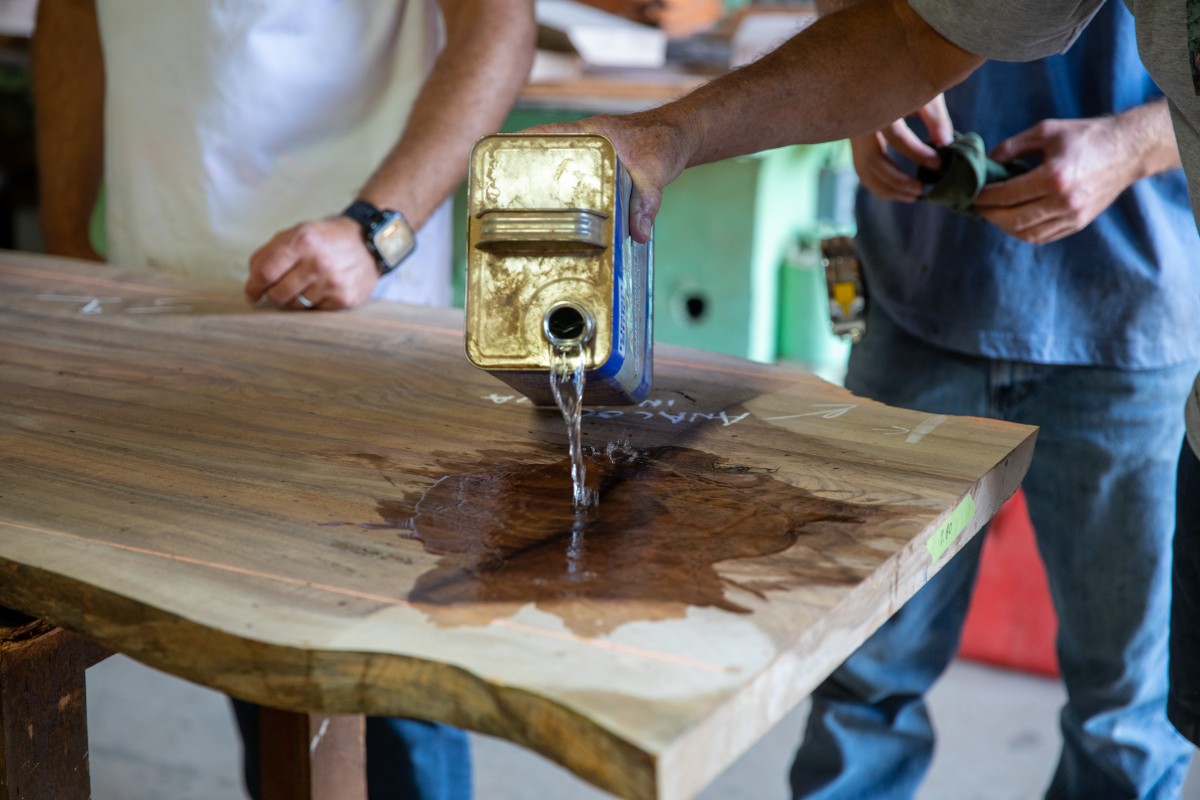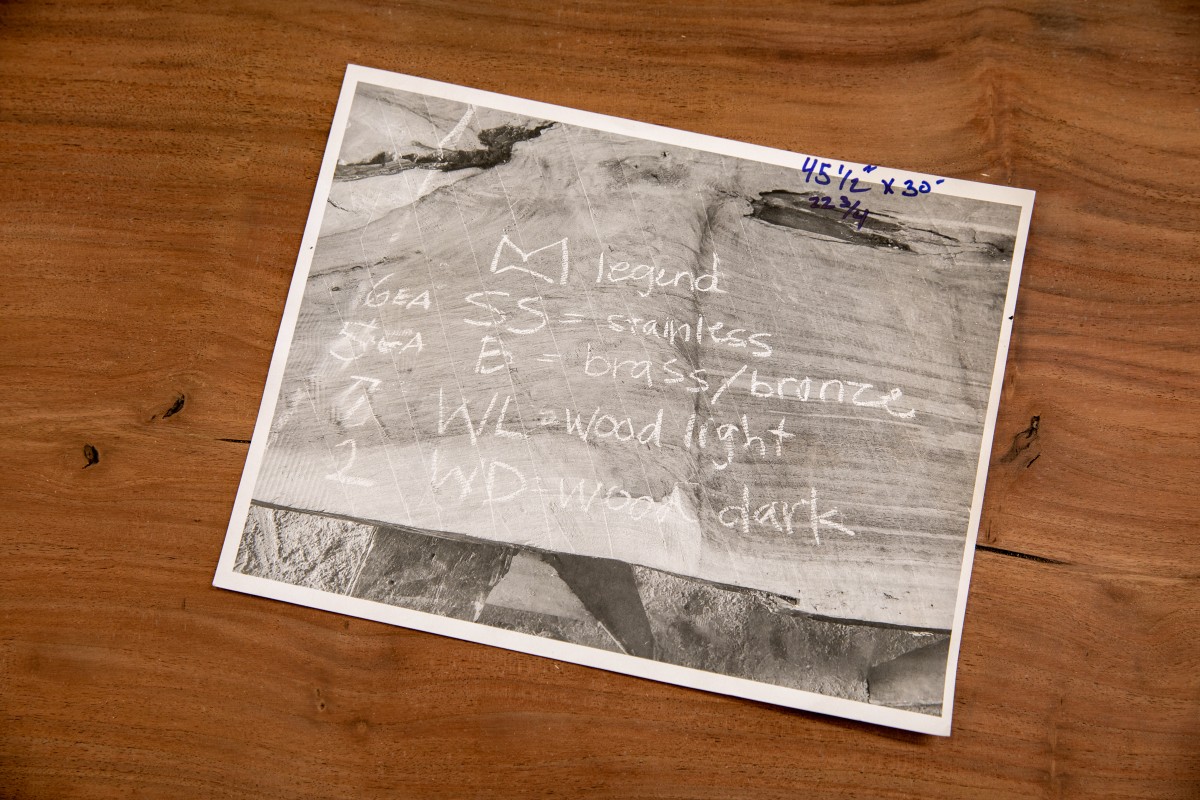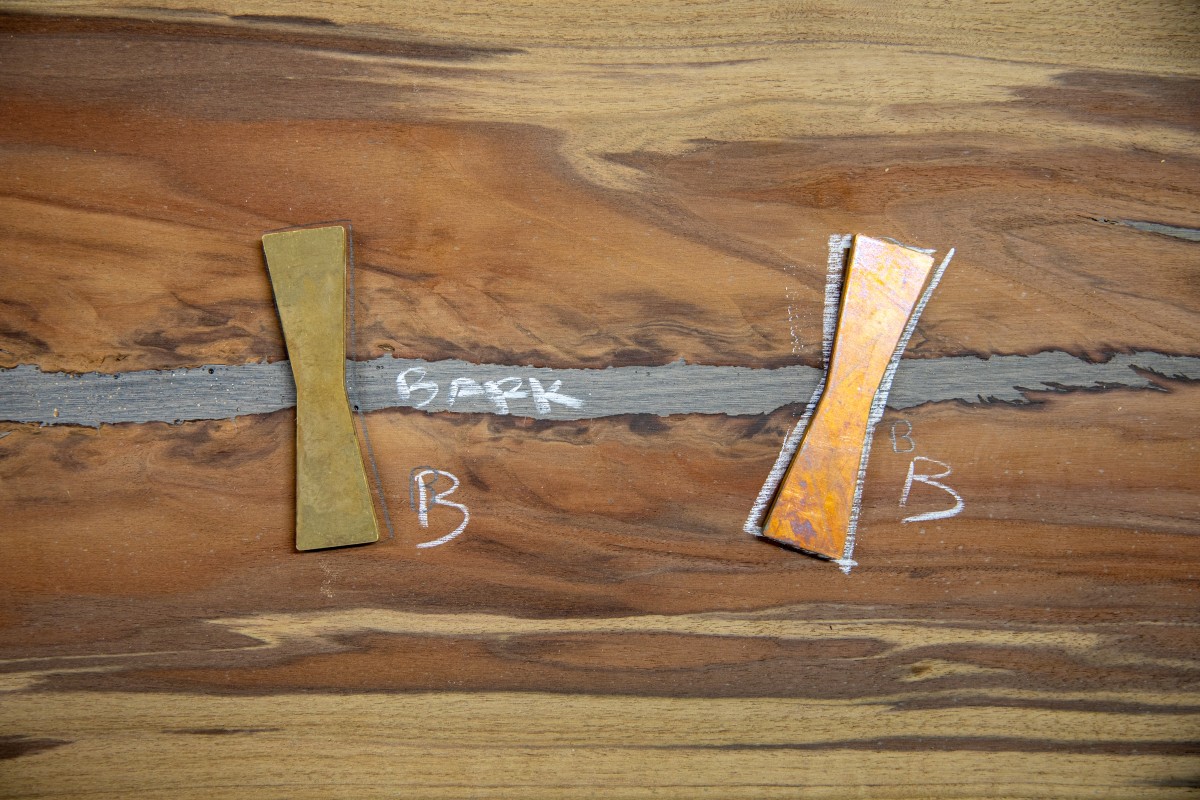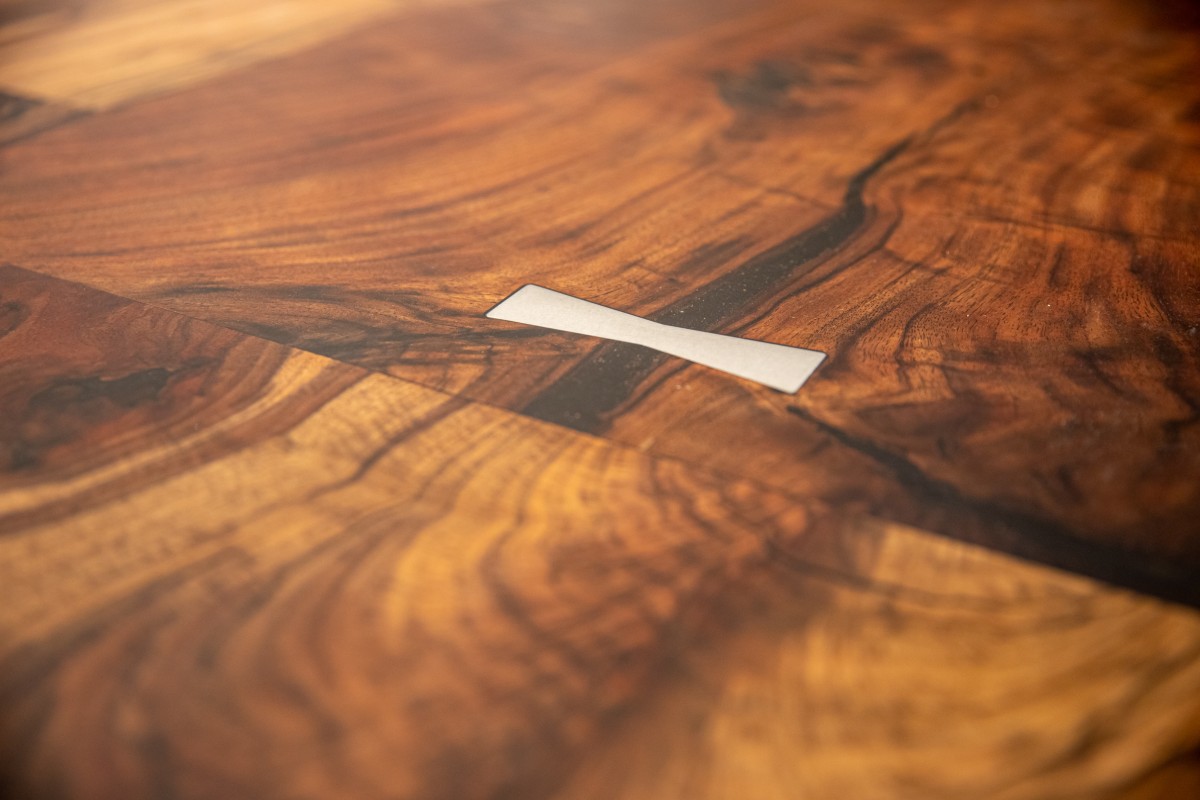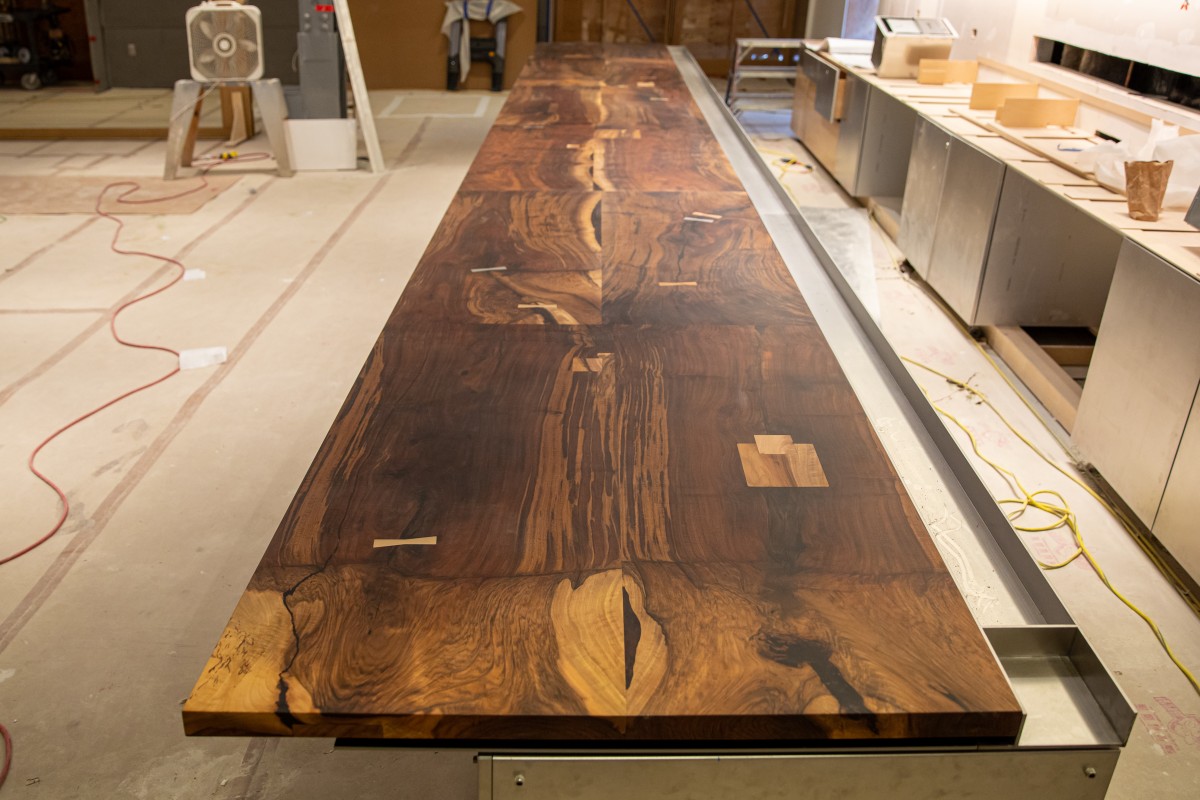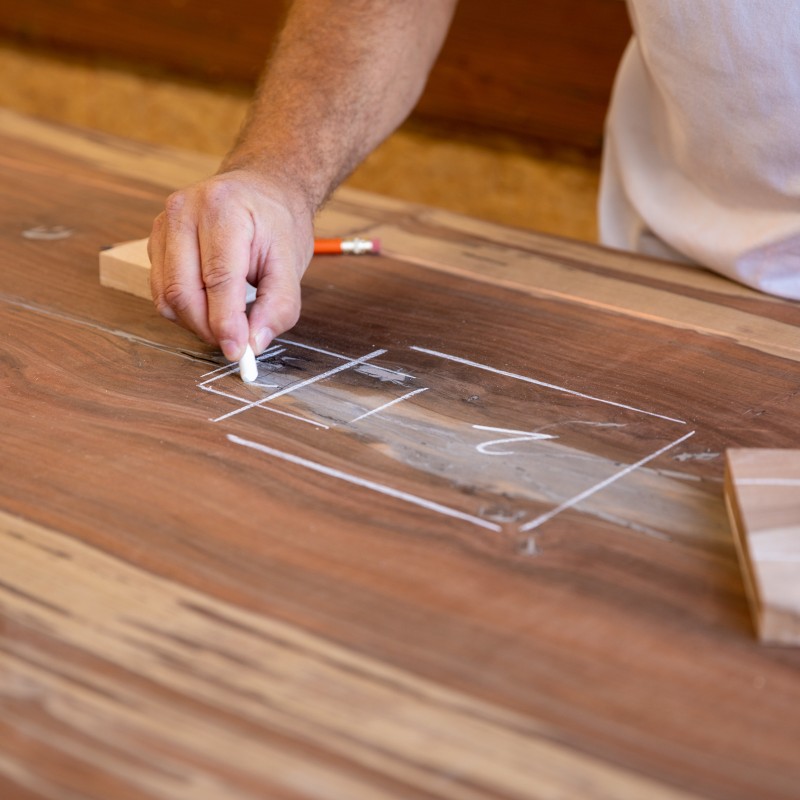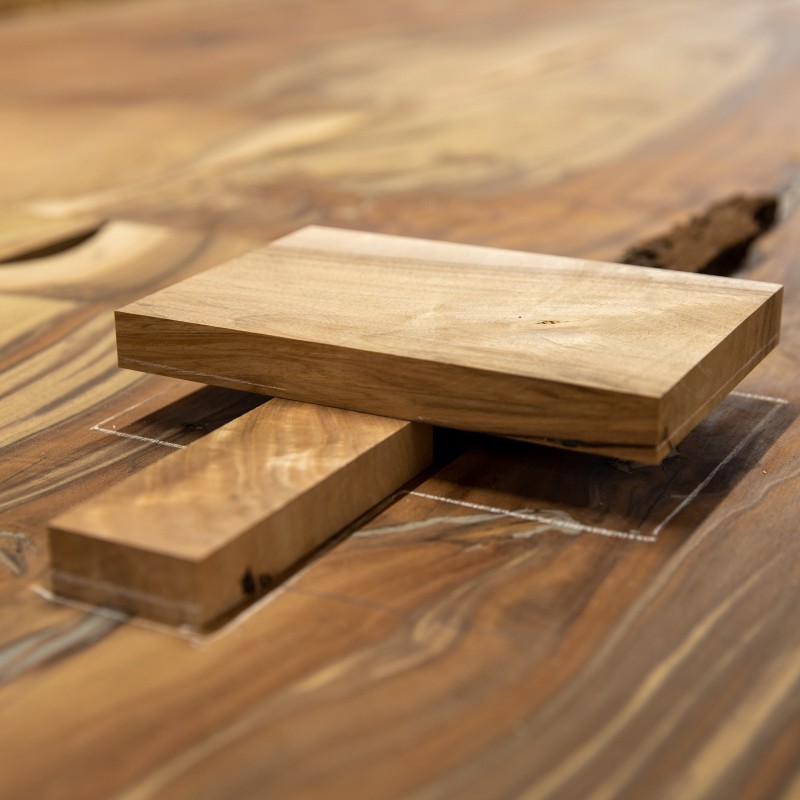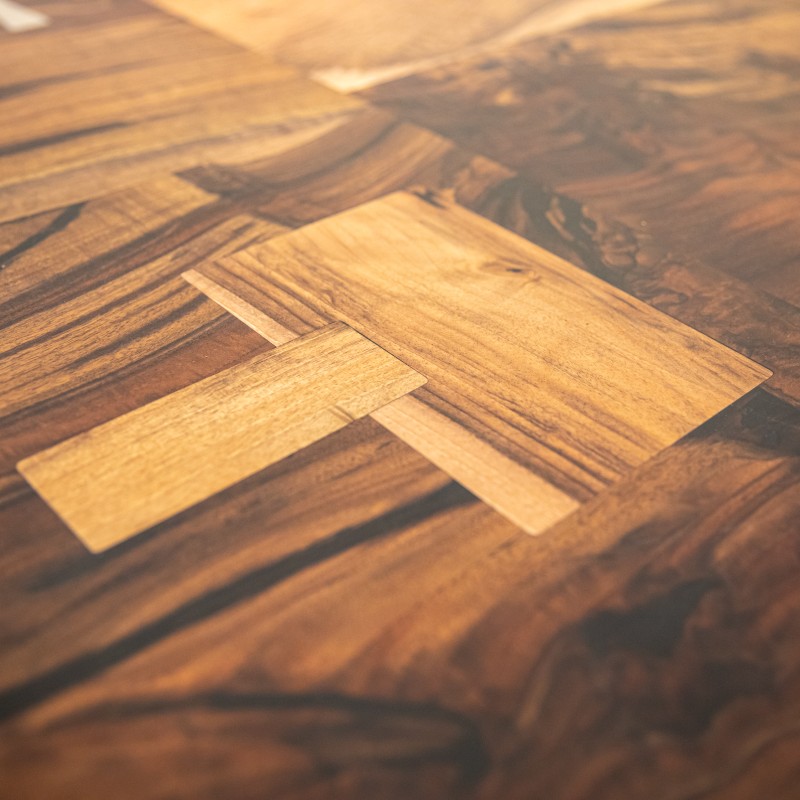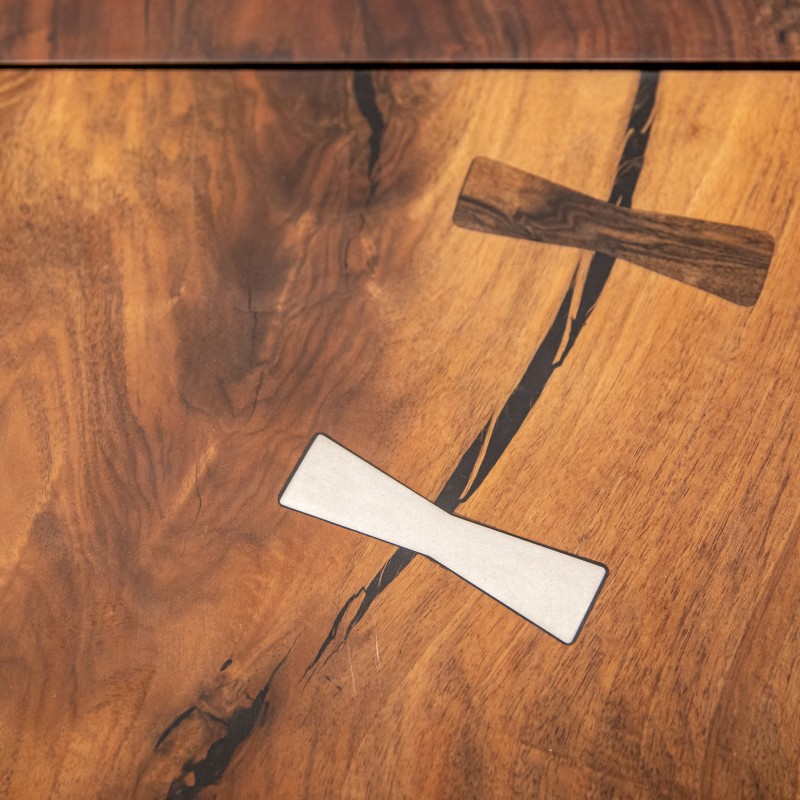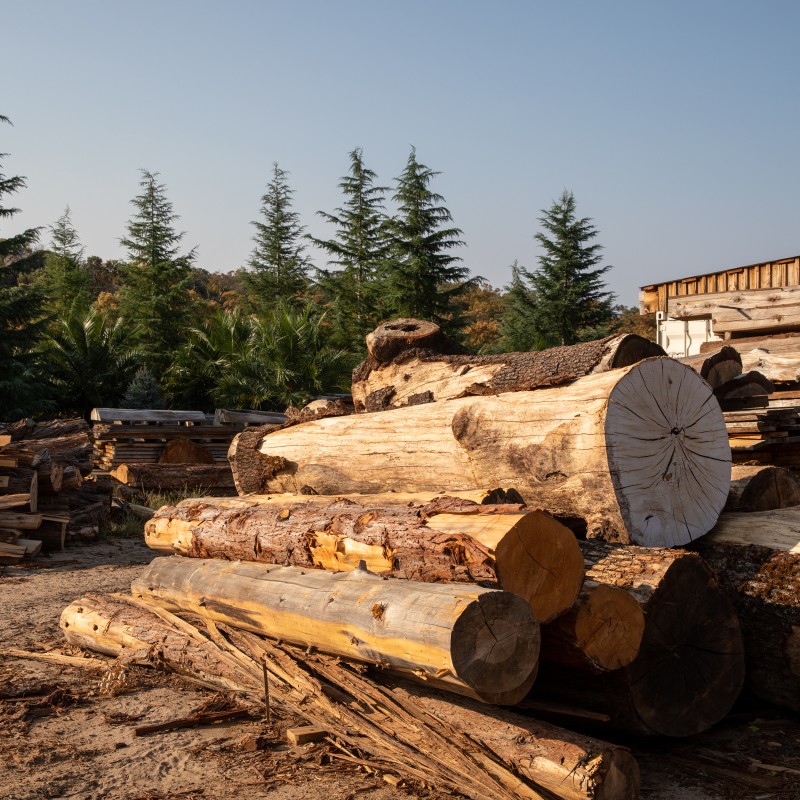Tule Peak Timber embraces environmentally conscious practices and meticulous craftsmanship to design and create stunning works of wood. From intricately designed, handcrafted doors to reclaimed wood charcuterie boards, no detail is too small for this local company, making them the perfect people to create Mingei’s new Bistro bar counter. A 30’ reclaimed wood bar counter will be at the center of the bustling life on the Commons level in the new Museum, serving as a visual and social focus for the dining space. Inspired by the works of George Nakashima, Sam Maloof, and others, this bar top is made from 3” solid old-growth California walnut, found and reclaimed especially for Mingei. In this Q&A, Tule Peak Timber owner, Rob Durfos shares how he conceptualized and collaborated with the Museum and architecture firm, LUCE et studio to assemble this object of both beauty and function.
Let’s start from the beginning, where did the wood for the Museum’s bar counter come from? And what type of wood is it?
The Museum’s bar counter is made from an old walnut tree, approximately 65 years old grown in the San Joaquin Valley. It was a commercial walnut tree that had stopped bearing nuts and needed to be removed. This is common in commercial orchards. About every 60-70 years they remove the old trees that no longer produce nuts and plant new ones.
For a little deeper dive. Walnut trees around here are grafted, so the bottom portion of the tree is a native rootstock called Claro walnut, which has good root resistance against the naturally occurring pathogens found in the soil in California. The top portion of the tree is called an English or a light walnut that originated from Persia. It was brought over by the English, and then the French grafted it onto various rootstocks. In California, they grafted it onto the Claro walnut rootstock and that's the basis for all of the commercial nuts up and down the valley.
